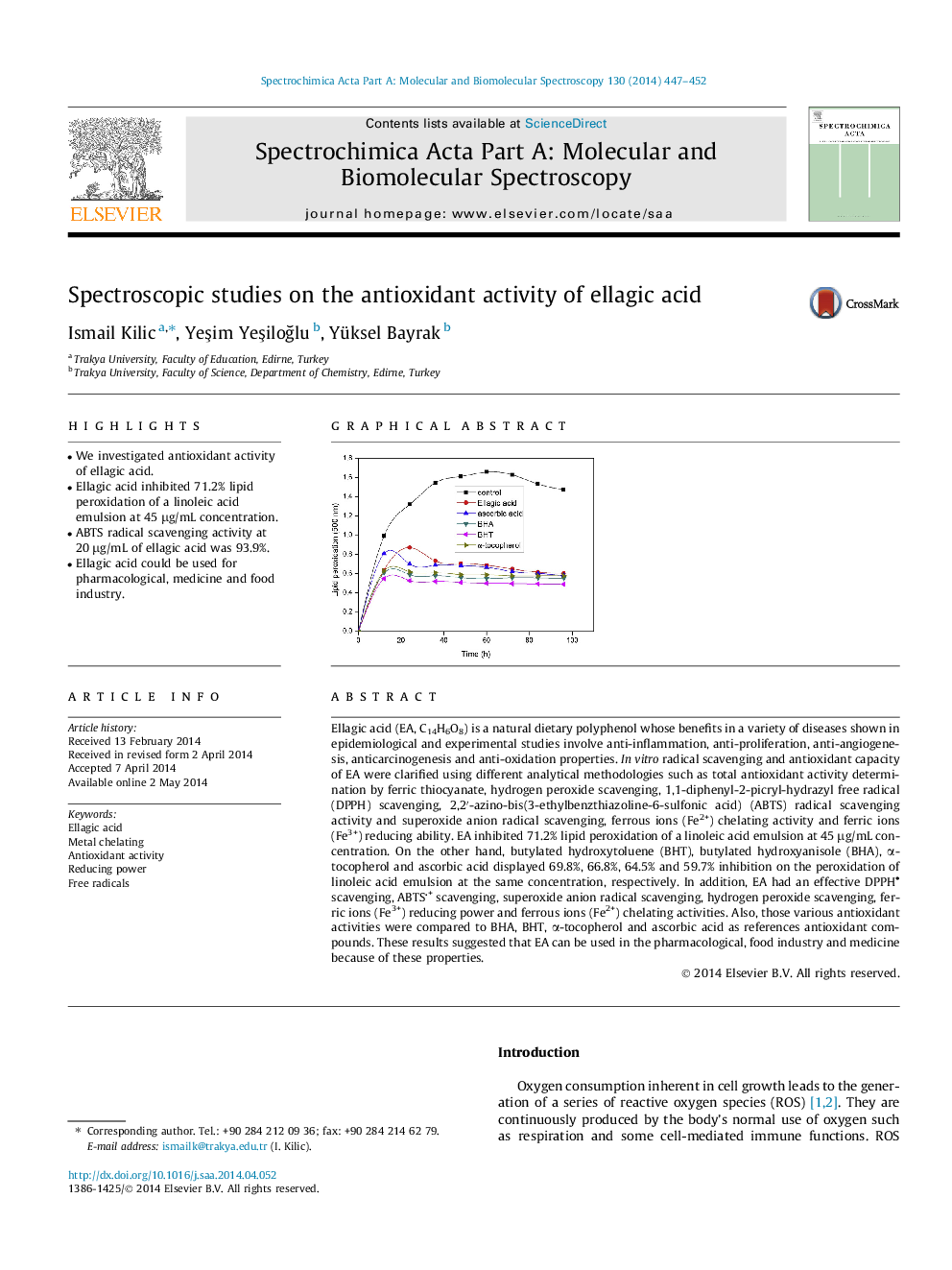| کد مقاله | کد نشریه | سال انتشار | مقاله انگلیسی | نسخه تمام متن |
|---|---|---|---|---|
| 1230375 | 1495238 | 2014 | 6 صفحه PDF | دانلود رایگان |

• We investigated antioxidant activity of ellagic acid.
• Ellagic acid inhibited 71.2% lipid peroxidation of a linoleic acid emulsion at 45 μg/mL concentration.
• ABTS radical scavenging activity at 20 μg/mL of ellagic acid was 93.9%.
• Ellagic acid could be used for pharmacological, medicine and food industry.
Ellagic acid (EA, C14H6O8) is a natural dietary polyphenol whose benefits in a variety of diseases shown in epidemiological and experimental studies involve anti-inflammation, anti-proliferation, anti-angiogenesis, anticarcinogenesis and anti-oxidation properties. In vitro radical scavenging and antioxidant capacity of EA were clarified using different analytical methodologies such as total antioxidant activity determination by ferric thiocyanate, hydrogen peroxide scavenging, 1,1-diphenyl-2-picryl-hydrazyl free radical (DPPH) scavenging, 2,2′-azino-bis(3-ethylbenzthiazoline-6-sulfonic acid) (ABTS) radical scavenging activity and superoxide anion radical scavenging, ferrous ions (Fe2+) chelating activity and ferric ions (Fe3+) reducing ability. EA inhibited 71.2% lipid peroxidation of a linoleic acid emulsion at 45 μg/mL concentration. On the other hand, butylated hydroxytoluene (BHT), butylated hydroxyanisole (BHA), α-tocopherol and ascorbic acid displayed 69.8%, 66.8%, 64.5% and 59.7% inhibition on the peroxidation of linoleic acid emulsion at the same concentration, respectively. In addition, EA had an effective DPPH
• scavenging, ABTS+ scavenging, superoxide anion radical scavenging, hydrogen peroxide scavenging, ferric ions (Fe3+) reducing power and ferrous ions (Fe2+) chelating activities. Also, those various antioxidant activities were compared to BHA, BHT, α-tocopherol and ascorbic acid as references antioxidant compounds. These results suggested that EA can be used in the pharmacological, food industry and medicine because of these properties.
Figure optionsDownload as PowerPoint slide
Journal: Spectrochimica Acta Part A: Molecular and Biomolecular Spectroscopy - Volume 130, 15 September 2014, Pages 447–452